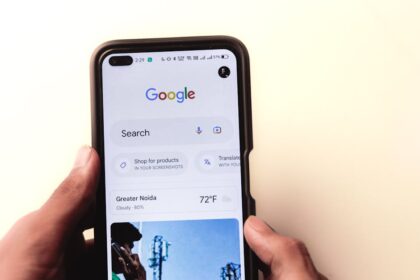Understanding Mobile-First Indexing and its On-Page SEO Implications
Mobile-first indexing represents a fundamental paradigm shift in how Google crawls, indexes, and ranks web content. Historically, Google’s primary index was based on the desktop version of a website. However, with the overwhelming proliferation of mobile device usage, Google transitioned to using the mobile version of a website for indexing and ranking purposes. This shift began rolling out in 2018 and has become the default for all new websites since July 2019. For existing sites, Google continuously evaluates readiness, notifying site owners via Google Search Console when their site is switched to mobile-first indexing.
The core implication for On-Page SEO is that the content and experience provided on the mobile version of your site are now paramount. If your mobile site has less content, slower performance, or a poor user experience compared to its desktop counterpart, your search rankings will suffer. Google’s rationale is simple: the majority of searches now occur on mobile devices, and users expect a seamless, efficient, and relevant experience on their chosen device. Therefore, a site’s mobile rendition must be the primary focus for all On-Page SEO efforts. This means everything from technical elements like page speed and core web vitals to content layout, internal linking, and structured data must be optimized with the mobile user in mind first, not as an afterthought. Disregarding mobile-first principles can lead to significant drops in visibility, traffic, and ultimately, conversions. It is no longer sufficient to merely have a “mobile-friendly” site; the mobile version must be the authoritative source of truth for search engines.
Core Principles of Mobile-First On-Page SEO
Mobile-first On-Page SEO revolves around delivering an exceptional user experience (UX) on mobile devices, ensuring that search engines can easily access, understand, and index your content. This involves a holistic approach that integrates technical optimization, content strategy, and design principles. The foundational principles include:
-
Prioritizing User Experience (UX): Every On-Page SEO decision for mobile should be filtered through the lens of the mobile user. This means ensuring content is easily consumable, navigation is intuitive, and interactions are effortless on smaller screens. Slow loading times, difficult-to-tap elements, intrusive pop-ups, or excessive scrolling immediately detract from UX and signal negative quality to search engines.
-
Uncompromising Speed and Performance: Mobile users are notoriously impatient. A delay of even a few seconds can lead to high bounce rates. Optimizing page speed is critical not only for user retention but also for core web vitals, which are direct ranking factors. This encompasses efficient code, optimized images, server responsiveness, and minimal third-party scripts.
-
Content Parity and Optimization: The content available on the mobile version of a page must be at least equivalent to, if not superior to, the desktop version. This includes all text, images, videos, and interactive elements. Furthermore, content needs to be optimized for mobile consumption – concise, scannable, and formatted appropriately for smaller displays.
-
Robust Technical Foundation: Mobile-first indexing demands a solid technical SEO framework. Responsive design is generally the preferred approach, ensuring a single URL serves content adaptively across devices. Proper implementation of viewport meta tags, correct handling of CSS and JavaScript, and effective use of structured data are essential for search engine crawling and understanding.
-
Accessibility for All: Mobile devices introduce unique accessibility challenges. Ensuring legible font sizes, sufficient color contrast, keyboard navigability (even for touchscreen devices, as some users rely on external keyboards or accessibility tools), and proper ARIA attributes contribute to a more inclusive mobile experience, which Google prioritizes.
These principles form the bedrock of a successful mobile-first On-Page SEO strategy, guiding all subsequent technical and content-focused optimizations.
Technical On-Page Considerations for Mobile
The technical underpinnings of your mobile site are critical for search engine crawlability, indexability, and ultimately, ranking performance. Neglecting these aspects can severely hamper your mobile-first SEO efforts.
Responsive Web Design (RWD): The Preferred Approach
Responsive Web Design (RWD) is Google’s recommended approach for mobile-first indexing. It involves building a single website that automatically adapts its layout and content to fit various screen sizes and orientations, from desktop monitors to tablets and smartphones.
-
Definition and Advantages: RWD uses flexible grids, flexible images, and media queries to resize, reposition, or hide content based on the user’s device characteristics. Its key advantage for SEO is maintaining a single URL structure (one URL for both desktop and mobile versions), which simplifies crawling and indexing. It eliminates the need for
rel=canonicalandrel=alternatetags, reduces duplicate content issues, and consolidates link equity, leading to more straightforward SEO management. It also ensures content parity, as the same HTML code is served to all devices, with CSS determining the presentation. -
Viewport Meta Tag: The cornerstone of responsive design is the
viewportmeta tag, placed within thesection of your HTML. It instructs the browser on how to control the page’s dimensions and scaling.width=device-widthsets the width of the viewport to the width of the device’s screen.initial-scale=1.0sets the initial zoom level when the page is first loaded. Without this tag, mobile browsers might render the page at a desktop width, making text and elements appear tiny.
-
Fluid Grids and Flexible Images:
- Fluid Grids: Instead of fixed pixel widths, responsive layouts use relative units like percentages (e.g.,
width: 50%;) for container widths and padding. This allows elements to scale proportionally with the viewport. - Flexible Images: Images should also scale fluidly. Using
max-width: 100%; height: auto;in CSS ensures images never overflow their containers and maintain their aspect ratio. However, for true mobile optimization, more advanced techniques likesrcsetandsizesattributes are crucial for serving appropriately sized image files, discussed further in the speed section.
- Fluid Grids: Instead of fixed pixel widths, responsive layouts use relative units like percentages (e.g.,
-
Media Queries: These CSS rules allow you to apply different styles based on device characteristics like screen width, height, orientation, and resolution.
@media screen and (max-width: 768px) { /* CSS rules for screens smaller than 768px */ }- Media queries are fundamental for adjusting font sizes, element spacing, navigation layouts (e.g., converting a horizontal menu to a hamburger icon), and column arrangements specifically for mobile viewports.
-
CSS/JS Optimization for Mobile:
- Prioritize Critical CSS: Deliver only the CSS necessary for above-the-fold content inline or early in the HTML to minimize render-blocking time. Load the rest asynchronously.
- Minify and Compress: Reduce file sizes of CSS and JavaScript by removing unnecessary characters (whitespace, comments) and applying GZIP compression.
- Defer Non-Critical JS: JavaScript often blocks the rendering of HTML. Deferring scripts (
deferattribute) or loading them asynchronously (asyncattribute) allows the browser to render the page first, improving perceived load speed. - Code Splitting: Break down large JavaScript bundles into smaller chunks that can be loaded on demand, reducing the initial payload for mobile users.
-
Server-Side Rendering (SSR) vs. Client-Side Rendering (CSR) for Mobile:
- CSR (e.g., React, Angular, Vue SPAs): Content is rendered in the user’s browser via JavaScript. While offering dynamic experiences, CSR can be problematic for mobile-first indexing if not handled correctly. Googlebot’s JavaScript rendering capabilities have improved, but initial page load can be slow as it waits for JS to execute, potentially impacting Core Web Vitals. Crucially, if content or links are dependent on complex JS execution, Googlebot might struggle to discover or index them efficiently, especially on first crawl.
- SSR: HTML is generated on the server and sent as a fully formed page to the browser. This is generally preferred for SEO, especially for mobile, as it ensures content is immediately available to crawlers and users, leading to faster LCP and better overall performance. Hybrid approaches (e.g., Next.js, Nuxt.js) that combine SSR with client-side hydration are often ideal, offering the benefits of both.
Mobile Page Speed Optimization: Core Web Vitals Focus
Page speed is a critical ranking factor for mobile-first indexing, directly impacting user experience and closely tied to Google’s Core Web Vitals (CWV).
-
Core Web Vitals (CWV): CWV are a set of metrics that measure real-world user experience for loading performance, interactivity, and visual stability. They are direct ranking signals, especially impactful for mobile.
- Largest Contentful Paint (LCP): Measures perceived loading speed. It reports the render time of the largest image or text block visible within the viewport. For mobile, a good LCP is typically 2.5 seconds or less. Optimization involves reducing server response time, optimizing images, deferring non-critical CSS/JS, and preloading critical resources.
- First Input Delay (FID): Measures interactivity. It quantifies the time from when a user first interacts with a page (e.g., clicks a button) to the time when the browser is actually able to respond to that interaction. For mobile, a good FID is 100 milliseconds or less. Optimization involves reducing JavaScript execution time, breaking up long tasks, and ensuring the main thread is not blocked.
- Cumulative Layout Shift (CLS): Measures visual stability. It quantifies unexpected layout shifts of visual page content. For mobile, a good CLS score is 0.1 or less. Optimization involves explicitly setting dimensions for images and video elements, ensuring ads/embeds have reserved space, avoiding dynamic injection of content above existing content, and using CSS transforms instead of properties that trigger layout.
-
Image Optimization: Images are often the largest contributors to page size, especially on mobile.
- Responsive Images (
srcset,sizes): Instead of serving one large image and resizing it,srcsetallows you to define a list of image sources with different resolutions or widths, and the browser picks the most appropriate one based on the user’s device and viewport.sizesdescribes how the image will be displayed relative to the viewport. - Next-Gen Formats (WebP, AVIF): These formats offer superior compression with better quality compared to JPEGs and PNGs, leading to significantly smaller file sizes. Using the
element allows for browser compatibility fallback: - Lazy Loading: Defer loading of images (and videos) that are not immediately visible in the viewport until the user scrolls down. This dramatically improves initial page load time. Native lazy loading (
loading="lazy") is now widely supported. - Image Compression Tools: Utilize tools like ImageOptim, TinyPNG, or server-side image optimization services to reduce file sizes without noticeable loss of quality.
- Responsive Images (
-
Code Optimization:
- Minification: Remove unnecessary characters (whitespace, comments) from HTML, CSS, and JavaScript files to reduce their size.
- GZIP Compression: Enable GZIP compression on your server to compress text-based files before sending them to the browser, significantly reducing download times.
- Eliminating Render-Blocking Resources: CSS and JavaScript files in the
can block the browser from rendering the page until they are downloaded and parsed. Move non-critical CSS to theor load asynchronously; defer or asynchronously load JavaScript. - Leveraging Browser Caching: Set appropriate cache-control headers for static assets (images, CSS, JS) so that returning users can load the page faster from their browser’s cache.
-
Server Response Time: A slow server response is the foundation of a slow website.
- CDN (Content Delivery Network) Usage: CDNs distribute your website’s static assets across multiple servers globally. When a user requests your site, content is served from the closest server, reducing latency and improving load times, especially for geographically dispersed mobile users.
- Fast Hosting: Invest in reliable, high-performance web hosting. Shared hosting may be cheaper but can often lead to slower server response times due to shared resources. VPS or dedicated hosting often offer better performance.
- Server-Side Caching: Implement server-side caching mechanisms (e.g., Varnish, Redis, or built-in CMS caching plugins) to store frequently accessed data and serve pages faster without re-generating them for every request.
-
Third-Party Scripts: External scripts (ads, analytics, social media widgets, chatbots) can significantly impact mobile page speed.
- Auditing and Optimizing: Regularly audit third-party scripts. Remove unnecessary ones. Prioritize those that are critical.
- Asynchronous Loading: Load third-party scripts asynchronously or defer them to avoid blocking main thread execution.
- Impact on Mobile Performance: Each external request adds latency. If a third-party script is slow to load or execute, it can directly contribute to poor LCP and FID scores on mobile. Choose lightweight, performance-focused alternatives where possible.
Mobile Usability and User Experience (UX)
Beyond pure technical speed, how users interact with your mobile site is paramount. Google’s algorithms consider various mobile usability factors, and poor UX leads to higher bounce rates, lower engagement, and ultimately, reduced search visibility.
-
Tap Targets:
- Size and Spacing: Elements that users can tap (buttons, links, navigation items) must be large enough to be easily tapped without accidentally hitting adjacent elements. Google recommends a minimum tap target size of 48 CSS pixels and sufficient spacing (e.g., 32 CSS pixels) between them to avoid mis-taps, especially on touchscreens. Overlapping tap targets are a common mobile usability issue flagged by Google Search Console.
- Accessibility: Adequate tap target size also benefits users with motor impairments or those using assistive devices.
-
Font Sizes:
- Readability on Small Screens: Text must be legible without requiring users to zoom. A base font size of 16px for body copy is generally recommended for mobile, with headings scaled proportionally.
- Line Height and Letter Spacing: Optimize line height (line-height) and letter spacing (letter-spacing) for improved readability on narrow screens, ensuring text isn’t cramped.
- Contrast: Ensure sufficient color contrast between text and its background for optimal readability, especially for users with visual impairments. Use a contrast checker tool.
-
Navigation: Mobile navigation requires careful consideration due to limited screen real estate.
- Hamburger Menus: A common solution for condensing navigation. Ensure the icon is clearly visible and easily tappable. While ubiquitous, be aware that hamburger menus can sometimes hide important top-level navigation, potentially increasing cognitive load. Consider alternatives or supplementing with clear in-page links for critical sections.
- Sticky Headers/Footers: Keeping essential navigation, search bars, or CTAs (Call-to-Actions) fixed at the top or bottom of the screen can improve accessibility and user flow, especially on long pages.
- Breadcrumbs: Provide clear breadcrumb trails to help users understand their location within the site hierarchy and easily navigate back to parent categories.
- Search Functionality: A prominent, easily accessible search bar is crucial for mobile users looking for specific content. Implement autocomplete features to enhance the experience.
-
Forms: Filling out forms on mobile can be tedious. Optimize for ease of input.
- Auto-Fill and Keyboard Types: Utilize HTML5 input types (e.g.,
type="tel",type="email",type="number") to trigger appropriate mobile keyboards. Enableautocompleteattributes to leverage browser auto-fill functionality for common fields like name, address, and credit card details. - Clear Labels and Placeholders: Ensure form fields have clear, persistent labels and helpful placeholder text.
- Simplified Forms: Break down long forms into multiple steps. Minimize the number of required fields.
- Error Handling: Provide immediate, clear, and actionable error messages for form validation.
- Auto-Fill and Keyboard Types: Utilize HTML5 input types (e.g.,
-
Pop-ups and Interstitials:
- Google’s Guidelines: Google explicitly penalizes intrusive interstitials that impede mobile user experience. These include full-screen pop-ups that cover content, stand-alone interstitials that require dismissal before accessing content, or layouts where the above-the-fold content is below the fold due to an interstitial.
- Avoiding Intrusive Elements: While not all pop-ups are bad (e.g., age verification, cookie consent, non-intrusive banners for login), avoid those that severely disrupt the user flow. Consider using smaller, less intrusive banners or slide-in elements for newsletter sign-ups or promotions.
-
Layout and Scrolling:
- Vertical Scrolling Preference: Mobile users are accustomed to vertical scrolling. Avoid horizontal scrolling at all costs, as it indicates a poorly responsive design and is extremely frustrating.
- Avoiding Excessive Scrolling: While vertical scrolling is fine, try to keep core information concise and accessible near the top of the page. Use accordions or tabs to condense supplementary information.
- Whitespace: Utilize ample whitespace to prevent elements from feeling cramped and improve readability.
- Visual Hierarchy: Use headings, bold text, and visual cues to create a clear visual hierarchy, guiding the user’s eye and making content scannable.
-
Mobile-Friendly Testing Tools: Regularly use Google’s official tools to assess your site’s mobile usability.
- Google Mobile-Friendly Test: A quick way to check if a specific page is considered mobile-friendly and identify issues.
- Google Search Console – Mobile Usability Report: Provides a comprehensive overview of mobile usability issues across your entire site, including details on specific errors like “Content wider than screen” or “Clickable elements too close together.”
- Lighthouse Audits: Integrated into Chrome Developer Tools, Lighthouse provides detailed reports on performance, accessibility, best practices, and SEO, with a strong focus on mobile metrics. Run audits regularly to identify areas for improvement.
Content Optimization for Mobile-First
Content remains king, but for mobile, its presentation and structure are critical. Mobile-first content optimization isn’t just about technical delivery; it’s about making your content digestible and engaging on a smaller screen.
- Conciseness and Clarity: Mobile users are often on the go or have shorter attention spans. Get to the point quickly. Use clear, direct language. Avoid verbose sentences or overly complex jargon where simpler alternatives exist. Every word counts.
- Scannability:
- Headings and Subheadings: Break up large blocks of text with frequent, descriptive
H2,H3, andH4tags. These act as signposts, allowing users to quickly scan and find relevant information. Use keywords naturally within headings. - Bullet Points and Numbered Lists: Convert paragraphs into lists where appropriate. Lists are inherently scannable and easier to digest on mobile.
- Short Paragraphs: Aim for paragraphs of 1-3 sentences. Long, dense paragraphs create a “wall of text” that is overwhelming on a small screen.
- Bold Text: Use bolding strategically to highlight key phrases, keywords, or important takeaways.
- Headings and Subheadings: Break up large blocks of text with frequent, descriptive
- Above-the-Fold Content: The content visible without scrolling on a mobile device is critical.
- Prioritizing Critical Information: Place your most important message, value proposition, or call-to-action (CTA) within the initial viewport. This ensures users grasp the page’s purpose immediately.
- Engaging Hooks: Start with a strong hook or question that grabs attention and encourages further scrolling.
- Visual Content: Images and videos are powerful on mobile, but they must be optimized.
- Optimizing Images for Mobile Viewing: Beyond technical compression and responsive attributes (
srcset,sizes), consider the visual impact of images on small screens. Avoid images with too much detail that gets lost when scaled down. Ensure images are relevant and add value, not just decorative. - Video Optimization: Embed videos responsibly. Ensure they are optimized for mobile streaming (adaptive bitrate, responsive players). Consider vertical video formats if appropriate for platforms like Instagram Reels or TikTok, but ensure horizontal videos are still viewable. Provide transcripts for accessibility and SEO.
- Optimizing Images for Mobile Viewing: Beyond technical compression and responsive attributes (
- Interactive Elements:
- Touch-Friendly Sliders/Carousels: If using sliders, ensure they are easily swipeable and have clear navigation indicators (dots, arrows). Avoid auto-playing sliders that can be disruptive.
- Accordions and Tabs: These are excellent for condensing large amounts of information, allowing users to expand only the sections they are interested in. Ensure the expand/collapse icons are prominent and tappable.
- Call-to-Actions (CTAs):
- Prominence and Tap-ability: CTAs should stand out. Use contrasting colors, clear button text, and ensure they are large enough to be easily tapped (referencing tap target size guidelines).
- Strategic Placement: Place CTAs where they are most relevant – above the fold, at the end of a section, or sticky at the bottom of the screen.
- Clarity: Use action-oriented language (e.g., “Shop Now,” “Learn More,” “Get a Quote”).
- Schema Markup for Enhanced Mobile SERP Visibility: Structured data (Schema.org markup) helps search engines understand the context of your content, leading to enhanced visibility in mobile search results, often in the form of rich snippets or special features.
- Local Business Schema: Crucial for businesses with physical locations. Helps your business appear in “near me” searches, Google Maps, and the local pack. Includes name, address, phone number, opening hours, reviews.
- Product Schema: Essential for e-commerce. Enables rich results showing price, availability, reviews, and star ratings, which are highly prominent on mobile product searches.
- Article Schema: For blog posts and news articles. Can enable rich results like headlines, images, and publication dates in carousels or top stories.
- FAQ Schema: Allows you to display frequently asked questions directly in the SERP, expanding to reveal answers. This takes up significant mobile SERP real estate.
- How-To Schema: For step-by-step guides, it can display individual steps directly in the search results, making content highly visible and actionable.
- Mobile Implications for Rich Snippets: Rich snippets and features like FAQs, How-To, and Reviews are especially valuable on mobile because they take up more screen real estate, increasing click-through rates (CTRs) by making your listing more appealing and informative. Ensure your schema is correctly implemented and validated using Google’s Rich Results Test tool.
Mobile-Specific Technical Implementations
While responsive design is the widely recommended approach, there are other mobile-specific technical implementations that warrant consideration depending on your goals and resources.
-
AMP (Accelerated Mobile Pages):
- Definition and Purpose: AMP is an open-source framework designed to create lightning-fast mobile pages. It achieves speed by restricting HTML, CSS, and JavaScript to a subset of standard web technologies, enforcing best practices, and leveraging a highly optimized cache network (Google AMP Cache). AMP pages are often instantly loaded when accessed from Google Search, signified by a lightning bolt icon in the SERP.
- Benefits:
- Extreme Speed: Pages load significantly faster, improving LCP and FID.
- Enhanced Mobile UX: Provides a smooth, instant-loading experience.
- SERP Visibility: Historically, AMP pages were eligible for the Google “Top Stories” carousel and had a clear visual indicator. While the visual badge is gone, speed remains a factor.
- Reduced Server Load: Content served from Google’s cache reduces strain on your own servers.
- Drawbacks:
- Restricted Functionality: The limited HTML/CSS/JS means certain dynamic features, complex forms, or third-party integrations might be difficult or impossible to implement.
- Separate Codebase: Often requires maintaining a separate version of your pages in AMP HTML, which adds development and maintenance overhead.
- Canonicalization: Requires proper
rel="canonical"andrel="amphtml"annotations to tell Google that the AMP version is a copy of the canonical non-AMP page. - Branding Challenges: Some argue that the AMP viewer’s URL (starting with
google.com/amp) can dilute branding.
- When to Use/Not to Use:
- Ideal for: News publishers, blogs, and content-heavy sites where speed and eligibility for “Top Stories” (if still relevant for your niche) are paramount, and complex interactivity is minimal.
- Less Ideal for: Highly interactive sites, e-commerce sites with complex product configurators, or sites heavily reliant on custom JavaScript. Most general business websites can achieve excellent mobile performance with well-implemented responsive design without the overhead of AMP.
-
PWA (Progressive Web Apps):
- Definition and Key Features: PWAs are websites built using modern web capabilities to deliver an app-like experience. They are not native apps but feel like them. Key features include:
- Reliable: Load instantly, even in flaky network conditions, thanks to Service Workers (caching).
- Fast: Optimized for performance.
- Engaging: Offer features like push notifications and “Add to Home Screen” capability.
- Discoverable: Still websites, so they are crawlable and indexable by search engines.
- Installable: Users can add them to their home screen without an app store.
- Linkable: Can be shared via URL.
- SEO Benefits:
- Improved Engagement Metrics: Faster loading, offline capabilities, and push notifications can significantly boost user engagement (lower bounce rate, higher time on site), which indirectly signals quality to search engines.
- Enhanced Speed (Core Web Vitals): Service Workers cache resources, leading to significantly faster repeat visits and improved LCP.
- Higher Conversions: A smoother, faster, app-like experience generally translates to better conversion rates.
- No Separate Indexing: Since a PWA is still a website (single URL), there are no separate indexing challenges as with m-dot sites.
- Implementation Considerations:
- Service Workers: The core technology for caching and offline capabilities.
- Web App Manifest: A JSON file that defines how your PWA should look and behave when installed on a user’s device (e.g., app icon, splash screen, display mode).
- HTTPS: A PWA requires serving over HTTPS for security and to enable Service Workers.
- Responsiveness: Must be fully responsive to adapt to various screen sizes.
- Auditing: Use Lighthouse to identify PWA-readiness metrics.
- When to Use: Ideal for content-heavy sites, e-commerce stores, and any site looking to provide a highly engaging, reliable, and potentially “installable” experience without building a full native app.
- Definition and Key Features: PWAs are websites built using modern web capabilities to deliver an app-like experience. They are not native apps but feel like them. Key features include:
-
Separate Mobile URLs (m-dot sites):
- Why it’s Generally Discouraged Now: Historically, some sites maintained
m.example.comfor mobile content separate fromwww.example.comfor desktop. With mobile-first indexing, this approach is largely discouraged.- Content Parity Issues: It’s common for m-dot sites to have less content than their desktop counterparts, leading to Google indexing and ranking the less complete mobile version.
- Increased Management Overhead: Maintaining two separate versions of a site doubles the effort for content updates, technical SEO, and bug fixes.
- Link Equity Dilution: While proper canonicalization helps, managing link equity across two domains can be more complex.
- Crawl Budget Inefficiency: Googlebot has to crawl two versions of each page.
- If Used, Proper
rel=canonicalandrel=alternateAnnotations: If you must use an m-dot site (e.g., due to legacy systems), correct annotation is absolutely critical to avoid duplicate content issues and ensure link signals are consolidated.- On the desktop page (
www.example.com/page): - On the mobile page (
m.example.com/page): - Google will usually pick the canonical desktop URL as the primary one for indexing if it detects proper annotation and desktop has full content. However, this is less straightforward than responsive design.
- On the desktop page (
- Why it’s Generally Discouraged Now: Historically, some sites maintained
-
Dynamic Serving:
- How it Works: Dynamic serving uses the same URL but delivers different HTML/CSS/JS based on the user-agent string (e.g., desktop browser vs. mobile browser). The server detects the device and serves the appropriate content.
- Potential Pitfalls for SEO (User-Agent Detection):
- User-Agent Cloaking: If not implemented carefully, dynamic serving can accidentally or intentionally be perceived as cloaking, where search engines are shown different content than users. This is a black-hat technique and can lead to penalties.
- Inconsistent Content: If the mobile version served via dynamic serving has less content than the desktop version, Google will index the less complete mobile version.
- Maintenance Complexity: Managing content and ensuring consistency across dynamically served versions can be challenging.
- Google’s Recommendation: While a valid approach, Google prefers responsive design due to its simplicity in content parity and reduced risk of misconfigurations. If using dynamic serving, you must include a
Vary: User-AgentHTTP header in your server response to inform caches (including Google’s) that the content varies by user agent.
Local SEO for Mobile
Mobile devices are inherently location-aware, making local SEO a critical component of mobile-first strategy. Users often perform “near me” searches, looking for businesses close to their current location.
- “Near Me” Searches: These searches have exploded in popularity. Google leverages user location data to provide highly relevant local results, often presented in the “Local Pack” (a map with 3 business listings) at the top of the SERP.
- Google My Business (GMB) Optimization: Your GMB profile is arguably the most important element for local mobile SEO.
- Complete Profile: Ensure all fields are filled out accurately and completely: name, address, phone number (NAP), business hours, categories, services, photos, and a detailed description.
- High-Quality Photos: Mobile users often browse images first. Upload appealing, high-resolution photos of your business, products, and services.
- Reviews: Encourage customers to leave reviews on your GMB profile. Respond to all reviews, both positive and negative, professionally. Review quantity and quality influence local pack rankings.
- Posts: Use GMB Posts to share updates, offers, events, and news. These appear directly in your GMB profile and can catch the eye of mobile searchers.
- Messaging: Enable the messaging feature to allow mobile users to easily text your business directly from the GMB listing.
- Q&A: Monitor and answer questions posed by users in the Q&A section of your GMB profile.
- Click-to-Call and Directions: On mobile, convenience is key.
- Click-to-Call Buttons: Implement prominent, easily tappable “Click-to-Call” buttons on your website, especially on contact pages and in the header/footer. Ensure phone numbers are correctly formatted (
555-555-5555). - Directions Integration: Embed Google Maps directly onto your contact page or link to directions, making it easy for mobile users to navigate to your physical location.
- Click-to-Call Buttons: Implement prominent, easily tappable “Click-to-Call” buttons on your website, especially on contact pages and in the header/footer. Ensure phone numbers are correctly formatted (
- Importance of Structured Data for Local Businesses:
- Implement
LocalBusinessSchema markup on your website. This explicitly tells search engines about your business’s NAP details, opening hours, reviews, and services, enhancing your eligibility for local rich snippets. - Use
hasMapproperty to link to your Google Maps listing. - Using Schema for local SEO can significantly improve your visibility in local packs and knowledge panels on mobile devices.
- Implement
Auditing and Monitoring Mobile Performance
Ongoing auditing and monitoring are crucial to maintain and improve your mobile-first On-Page SEO. Google’s algorithms and user expectations evolve, so what works today might need adjustment tomorrow.
- Google Search Console (GSC): Your primary tool for understanding how Google views your site.
- Mobile Usability Report: This report specifically highlights issues that make your site difficult to use on mobile, such as “Text too small to read,” “Content wider than screen,” and “Clickable elements too close together.” Address these issues promptly.
- Core Web Vitals Report: Provides real-world data (field data) from Chrome users on your site’s LCP, FID, and CLS performance. It categorizes URLs as “Good,” “Needs Improvement,” or “Poor.” Focus on fixing “Poor” URLs first, as they are most likely impacting your rankings.
- Indexing > Pages Report: Check for any mobile-specific indexing issues. Ensure all your canonical mobile content is being indexed.
- URL Inspection Tool: Use this to test specific URLs for mobile usability, check the indexed version (which will be the mobile version), and see rendering issues.
- Lighthouse Audits: A powerful open-source tool built into Chrome Developer Tools.
- Comprehensive Reports: Provides scores and detailed recommendations for Performance, Accessibility, Best Practices, SEO, and PWA readiness.
- Mobile Focus: Lighthouse defaults to simulating a mobile device, making it invaluable for mobile-first audits.
- Identify Opportunities: Pinpoints specific issues like render-blocking resources, unoptimized images, slow JavaScript execution, and accessibility violations, providing actionable steps to fix them.
- PageSpeed Insights: Another Google tool that provides laboratory data (simulated environment) and field data for performance. It’s user-friendly and offers clear recommendations for both mobile and desktop. It’s essentially a web-based version of Lighthouse.
- Analytics (Google Analytics 4 recommended):
- Mobile Traffic: Monitor the percentage of your traffic coming from mobile devices. This helps reinforce the importance of mobile optimization.
- Bounce Rate: A high bounce rate on mobile can indicate poor UX or slow loading. Compare it to desktop bounce rates.
- Time on Site/Engagement: Low time on site or engagement metrics for mobile users can signal that content isn’t compelling or easy to consume.
- Conversions: Track conversion rates on mobile vs. desktop. Significant discrepancies can highlight mobile-specific conversion funnel issues.
- User Flow: Analyze how users navigate your site on mobile. Are there specific drop-off points?
- Competitor Analysis:
- Benchmarking: Regularly review the mobile experience of your top-ranking competitors. How fast are their sites? How do they structure content for mobile? What navigation patterns do they use?
- Identify Gaps and Opportunities: Learning from competitors can reveal new strategies or highlight areas where you can gain a competitive advantage in mobile performance and UX. Use tools like Lighthouse on competitor sites.
- Content Parity Check: If a competitor outranks you for a mobile query, check if their mobile content is more comprehensive or better formatted than yours.
Future Trends and Advanced Considerations for Mobile-First SEO
The mobile landscape is constantly evolving, driven by technological advancements and shifting user behaviors. Staying ahead requires anticipating these changes.
- Voice Search on Mobile Devices:
- Prevalence: Voice assistants (Siri, Google Assistant, Alexa) are predominantly used on mobile devices.
- Conversational Queries: Voice searches are typically longer, more conversational, and question-based (who, what, when, where, why, how).
- SEO Implications:
- Long-Tail Keywords: Optimize content for natural language and long-tail question phrases.
- Featured Snippets/Answer Boxes: Google often pulls answers for voice queries directly from Featured Snippets. Structuring content with clear Q&A sections and using FAQ Schema can help.
- Local SEO: Many voice searches are local (“nearest coffee shop”). Ensure your local SEO is impeccable.
- Context and Intent: Understand the intent behind voice queries – often informational or transactional.
- AR/VR Integration for Mobile Experiences:
- Emerging Technologies: Augmented Reality (AR) and Virtual Reality (VR) are becoming more accessible on mobile, offering immersive experiences (e.g., trying on clothes virtually, visualizing furniture in a room).
- SEO Relevance: While not a direct ranking factor yet, sites that integrate AR/VR effectively can offer unique, engaging mobile experiences that increase dwell time, reduce bounce rates, and improve overall user satisfaction – all indirect SEO signals.
- Content Creation: Prepare for the shift towards creating 3D models and interactive content that can be surfaced in AR/VR environments.
- AI and Machine Learning’s Role in Mobile SEO:
- RankBrain, BERT, MUM: Google’s AI algorithms (RankBrain for query interpretation, BERT for understanding nuances of language, MUM for multimodal understanding) are constantly improving how search engines comprehend content and user intent, especially for complex or conversational mobile queries.
- Semantic SEO: Focus on creating semantically rich content that thoroughly covers a topic, rather than just keyword stuffing. This aligns better with how AI understands content.
- User Behavior Analysis: AI helps Google analyze vast amounts of user interaction data (clicks, scrolls, time on site, return visits) to refine rankings for mobile users.
- Privacy Considerations on Mobile:
- Data Collection and Consent: Stricter privacy regulations (GDPR, CCPA) and browser changes (e.g., third-party cookie deprecation) impact how data can be collected and used, particularly on mobile.
- Impact on Analytics and Personalization: SEOs need to adapt to more privacy-centric data collection methods. Reliance on first-party data will increase.
- Transparency: Clear, mobile-friendly privacy policies and cookie consent banners are essential for compliance and user trust. Intrusive consent pop-ups can negatively impact mobile UX and CLS if not implemented carefully.
- The Continued Evolution of User Expectations:
- Speed is Non-Negotiable: Users expect instant gratification. Any delay, however minor, will be met with frustration.
- Personalization: Users expect content and experiences tailored to their preferences and previous interactions.
- Seamless Transitions: The lines between mobile web, native apps, and desktop experiences will continue to blur. Users expect seamless transitions and consistent experiences across all touchpoints.
- Visual Dominance: Visual search, short-form video, and rich media will continue to grow in importance. Optimizing these assets for mobile consumption will be crucial.
- Simplicity and Intuition: As devices and interfaces become more complex, the demand for simple, intuitive, and clutter-free mobile experiences will intensify.
These trends underscore the need for continuous adaptation and a deep understanding of mobile user behavior. Mobile-first SEO is not a one-time fix but an ongoing commitment to delivering the best possible experience on the devices that dominate global internet usage. The focus will remain firmly on speed, usability, and delivering relevant, high-quality content that satisfies user intent, regardless of the technological advancements that emerge. Ignoring these mobile-centric considerations will invariably lead to decreased search visibility and a diminished online presence in the current and future digital landscape.













